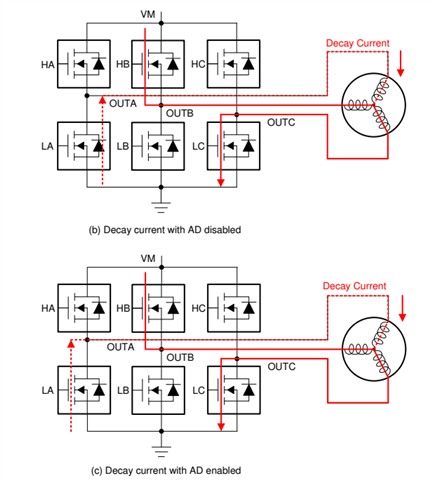1) I can understand the current can be sensed if it flow through the main path by the sense FET beside the low-side FET. Will the sense FET sense the current flowing through the body diode of the low-side FET?
2) Whe the high-side or low side FET is switched on,can the current flow from the source pin to drain pin? It can obviously flow the source pin to drain pin through the body diode (figure b). Can it flow through the main path (figure c)? From the figure c extracted from the page 41 of the part datasheet, we know it can. But it is different from my common experience of a N-MOSFET.



